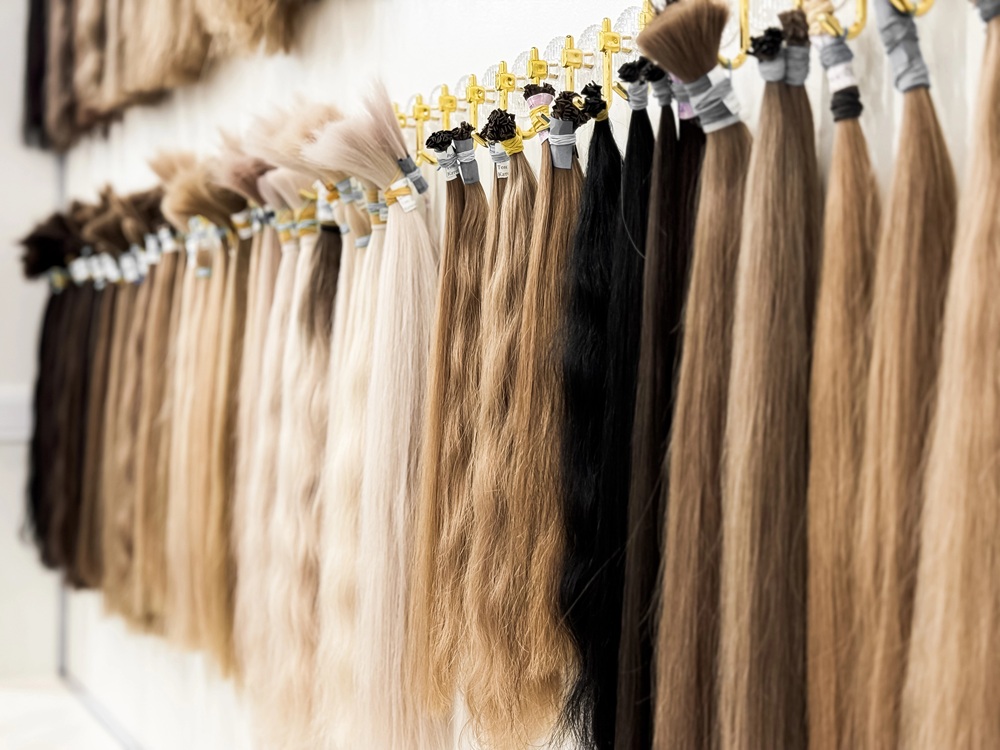Choosing between clip-in and tape-in hair extensions can confuse anyone looking to enhance their hairstyle. Both options offer distinct advantages depending on your lifestyle, budget, and desired outcome. The best choice depends on your specific needs: clip-ins provide versatility and ease, while tape-ins deliver a more permanent, seamless look.
For those seeking occasional length or volume, clip-in extensions offer the convenience of quick application and removal without professional help. They’re perfect for special events or weekend glam. Meanwhile, tape-in extensions provide a semi-permanent solution lasting 6-10 weeks with proper maintenance, giving you consistent length and fullness.
This makes them ideal for anyone craving a longer-lasting transformation without daily fuss. For a sleek, put-together look, many turn to shiny straight hair extensions to maintain that smooth, polished style. They can be styled just like your natural hair and work well for everyday wear and more refined occasions. The key is choosing what feels most comfortable and suits how you wear your hair daily.
Key Takeaways
- Clip-ins offer temporary wear with easy DIY application, while tape-ins provide longer-lasting results requiring professional installation.
- Your lifestyle, maintenance preferences, and budget should determine which extension type will work best for your daily routine.
- Quality matters regardless of extension type, with better materials ensuring more natural-looking results and improved durability.
Comparing Clip-In and Tape-In Hair Extensions
Understanding the fundamental differences between clip-in and tape-in hair extensions can help you make an informed decision based on your lifestyle needs and hair goals. Both options offer unique benefits that cater to different preferences.
Ease of Use and Flexibility
Clip-in extensions provide exceptional versatility for those who prefer temporary hair enhancements. They feature pressure-sensitive clips attached to wefts that secure to your natural hair in minutes without professional help. This do-it-yourself option allows you to transform your look for special occasions and remove them before bedtime.
Tape-ins, conversely, require professional installation. Thin wefts are sandwiched between sections of your natural hair using medical-grade adhesive. The process typically takes 1-2 hours but provides a semi-permanent solution lasting 6-8 weeks before needing repositioning.
Clip-ins accommodate natural movements while being worn, but may feel slightly heavier than tape-ins. For active lifestyles, tape-in extensions provide a more secure fit that withstands exercise and daily activities without shifting.
Those new to extensions often find clip-ins less intimidating as they allow experimentation without commitment.
Quality and Appearance
Both extensions are available in 100% human hair options, providing the most natural look and feel. High-quality extensions blend seamlessly with your natural hair and can be heat-styled, coloured (with professional guidance), and treated like your own hair.
Tape-ins lie flatter against the scalp, creating an exceptionally natural appearance even with fine hair. When properly installed, they’re virtually undetectable and can be worn in various hairstyles, including ponytails.
Clip-ins may show attachment points with certain hairstyles but offer immediate volume and length. They come in various textures, colours, and styles to match different hair types.
The thickness of extensions varies by brand, with premium options offering multi-tonal coloration that mimics natural hair dimension. For special events, clip-ins can be strategically placed for dramatic volume without full commitment.
Cost and Maintenance Considerations
Price points differ significantly between these options. Clip-ins typically range from $150-$400 for a full set and remain cost-effective as they’re reusable for up to a year with proper care. The one-time purchase eliminates ongoing salon visits for installation.
Tape-ins generally cost $200-$600 plus installation fees ($150-$300), making them initially more expensive. However, they require professional removal and reinstallation every 6-8 weeks, adding to long-term costs.
Maintenance routines also differ substantially. Clip-ins need washing after 15-20 wears using sulfate-free products and proper drying before storage. Tape-ins require specialized care to preserve the adhesive bonding, including sulfate-free products and careful brushing.
Clip-ins require minimal daily hair care adjustments since they’re removed nightly. Tape-ins demand consistent attention to prevent tangling and maintain the bonds’ integrity, including sleeping with braided hair and using leave-in conditioners.
Factors to Consider When Choosing Hair Extensions
Selecting the right hair extensions involves carefully evaluating your natural hair characteristics and understanding how different extension types will interact with your existing hair. Your lifestyle requirements and maintenance preferences will also significantly impact which option serves you best.
Assessing Hair Type and Desired Outcome
When choosing between clip-in and tape-in extensions, your natural hair texture is crucial. Fine hair often benefits from lightweight clip-ins that won’t pull or create excessive tension at the roots.
Those with thin hair seeking added volume might find tape-ins blend more seamlessly, creating a natural-looking thickness throughout. For individuals with curly or wavy hair, extension texture matching becomes essential for a cohesive look.
Hair length also matters significantly. Those with short hair may need strategic placement of extensions to avoid visible attachment points, while those with longer hair typically have more flexibility with both styles.
Impact on Hair Health and Growth
Tape-in hair extensions have earned a reputation for being among the least damaging extensions when properly installed. They use medical-grade adhesive that secures firmly without excessive pulling on natural hair strands.
Clip-ins offer the advantage of daily removal, giving your natural hair a break and potentially allowing for better hair growth during non-wearing periods. This intermittent use can significantly reduce stress on hair follicles.
Extension weight matters tremendously for hair health. Excessively heavy extensions can cause traction alopecia or breakage, particularly in those with already fragile hair structures.
Conclusion
Choosing between clip-in and tape-in extensions ultimately depends on your lifestyle, budget, and hair goals.
Clip-ins offer versatility and minimal commitment, making them ideal for occasional wear and those new to hair extensions. They can be applied and removed daily without professional help.
Tape-ins provide a more permanent solution with a natural appearance, but they require professional installation and regular maintenance appointments. Before making your decision, consider your hair’s health, styling needs, and long-term commitment.

